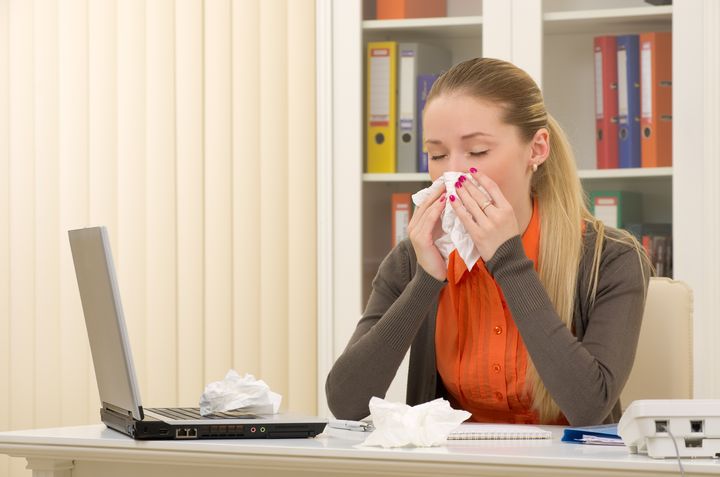
The impact of cold and flu season on the workforce is far-reaching. According to the Centers for Disease Control and Prevention (CDC), productivity losses related to absenteeism cost employers $225.8 billion annually, or $1,685 per employee.
Many Americans shrug off signs of sickness and head into the office. In fact, a survey by Robitussin® found that 73 percent of American’s don’t consider coughing as an indication of sickness, even though it’s a symptom that may be eased with treatment.
Others believe that taking a sick day is a sign of weakness – a message that their bosses often communicate, intentionally or not. Some who do take sick days don’t use them to truly rest because they dread missing deadlines or facing a pileup of work after time away.
But ignoring a nasty cold can come at a price: employees who don’t take time off to get well not only run the risk of increasing the length of their own illness but also infecting other employees.
The best strategy for employers is to play defense and encourage employees to take care of themselves. Here are 7 ways to help boost employee wellness and limit the productivity slide during cold and flu season.
1. Examine your company culture.
Some office environments set an expectation, spoken or unspoken, that employees should only take a sick day if they are bleeding profusely or on their deathbed. This manifests itself in company leaders who show up even when they are obviously not well. Let employees know that you want them to come to work healthy and stay home if they are sick or contagious – then follow this advice yourself.
2. Provide flexibility.
If an employee isn’t 100 percent but has work to do, consider letting them telecommute or participate in meetings by phone. Even if an employee is hesitant to use a sick day, you can help prevent the spread of cold or flu germs in the workplace by extending the option to work from home.
3. Discourage the spread of germs.
Model good germ management by coughing and sneezing into your elbow or arm. Make sure there is plenty of hand sanitizer available in the office and that surfaces and high-contact areas like doorknobs, phone handles and keyboards are wiped down with disinfecting wipes.
4. Practice good manners when sick.
Set the example with your own behavior. If you are recovering from illness, prevent the spread of germs by avoiding contact with others. While it may feel awkward to refuse a handshake or hug, just explain that you are recovering from a cold and you’re trying to avoid sharing your germs.
5. Remind employees about their sick days.
Clearly communicate your company’s policy on sick days and encourage employees to use them to rest and recover from illness. When an employee is obviously ill, gently let them know that you are concerned about their health and the health of everyone else in the office. Reiterate that it’s important to rest on a sick day – a foreign concept to many hard-charging professionals.
6. Beef up company wellness efforts.
Good nutrition, exercise, rest and preventive care are the best ways to help our immune systems fight off germs. Gym memberships, in-office exercise facilities or classes, health insurance that covers annual flu vaccines and encouraging your staff to get proper rest by discouraging excessive after-hours work are all ways to help employees stay healthy. If your company already has these benefits in place, remind employees that they are there.
7. Keep productivity up by staying comfortable.
Even when you’re feeling better and are back in the office, some symptoms can be persistent. Consider taking a medicine that will relieve symptoms, help you feel better and reduce the spread of germs to others.
